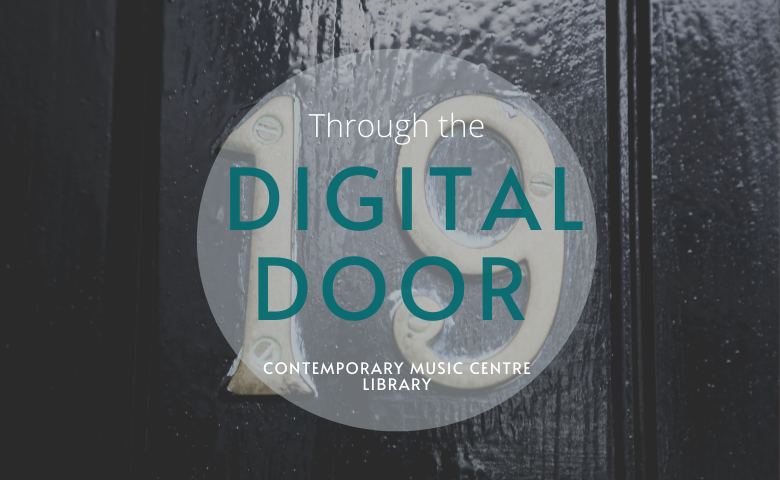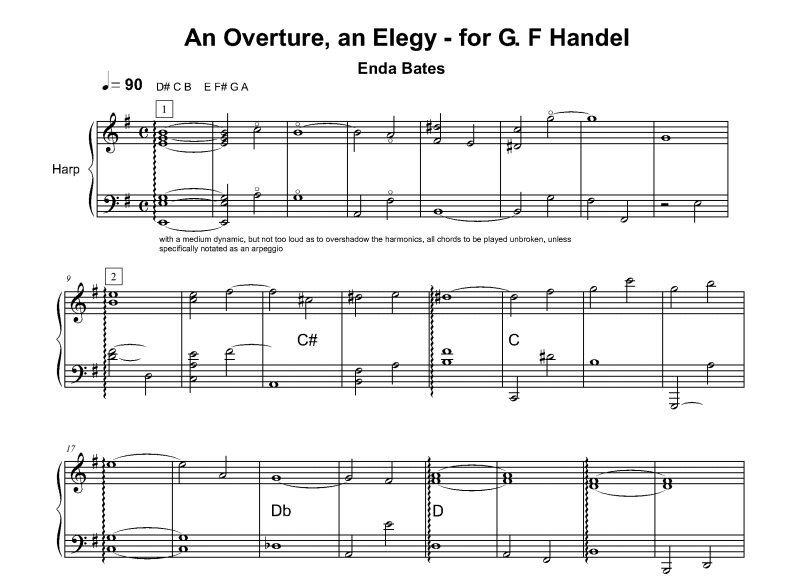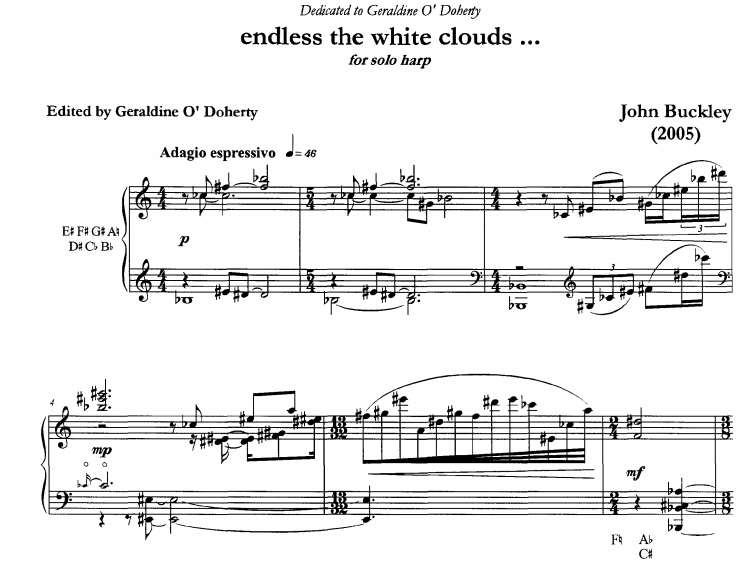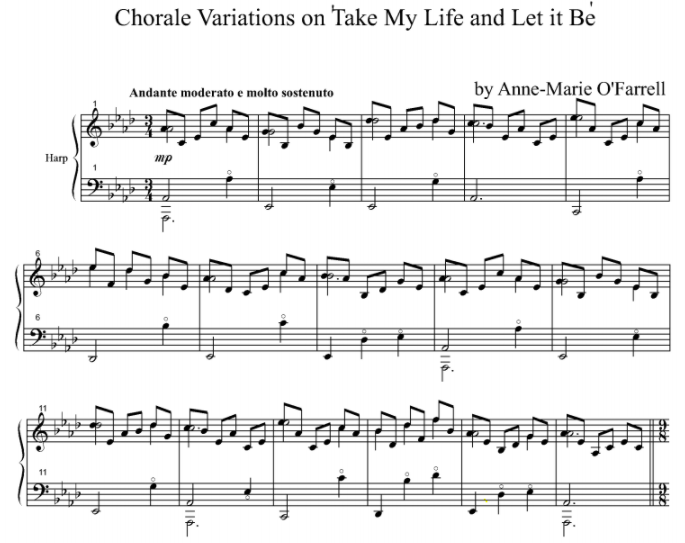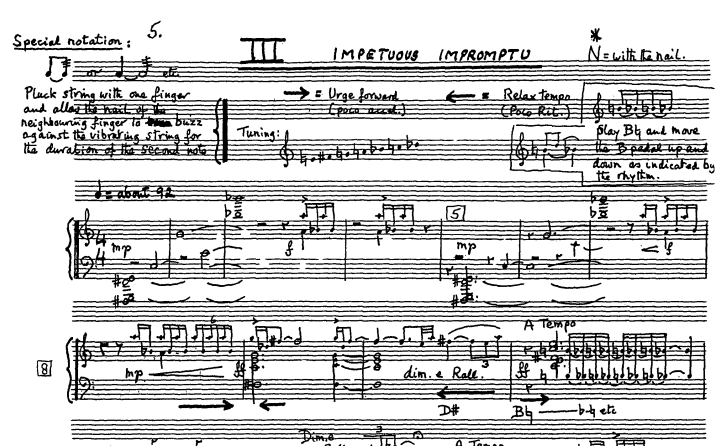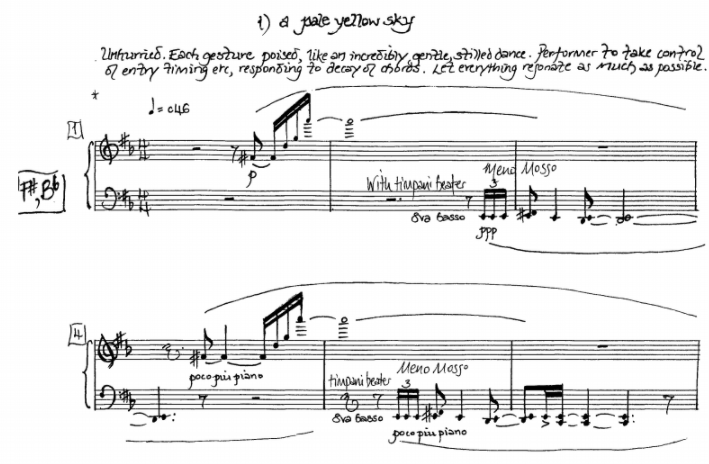Through the Digital Door: Harp works in CMC's Library
For this week's Through the Digital Door, Library Co-ordinator Susan Brodigan focuses on works for solo harp or harp and electronics. One work is very specifically scored for 'harp and gun', but can still be performed by a single soloist!
CMC's building in Fishamble Street still remains closed to the public due to Covid-19 restrictions, and we look forward to a time where we can welcome you back into our building again. We are still providing our usual supports remotely via our website and via email, please contact us with any enquiries.
Gráinne Mulvey: Exploration (2001) 5'
This work was premiered by composer/performer Anne-Marie O'Farrell at the @TheDrawingRoom concert series in 2015. Exploration studies the seven notes corresponding to the seven pedals of the harp. Exploration was the focus of a feature in AIC's New Music Journal in September 2016 where Jennifer McCay interviews Anne-Marie O'Farrell about this work.
...I find with Gráínne's writing that it's so cleverly written in such a way that listeners, with or without a music background, will hear the musical direction that she's taking them in, and students and performers can turn to her scores and find something much more detailed and satisfying to study. I think that is the mark of great writing, if it can say something to the audiences at first hearing and also at subsequent hearings or on more detailed study.
Enda Bates: An Overture, An Elegy: for G.F. Handel for harp and electronics (2011) 5'
This work was premiered at Contemporary Music Centre's Culture Night in 2011, performed by Clíona Doris. It is an elegy for Handel in what was the 270th anniversary of the completion of his Messiah, which was premiered on Fishamble Street.
The Messiah remains an incredibly popular piece of music, and there is a joyous exhilaration to this work which, during performances, can clearly be seen on the faces of performers and audience alike. I myself have always felt a certain distance, a certain remove from this kind of stately baroque music. However, I recognize this type of emotional response, this heady rush that music can provoke. With this piece I wanted to try to bridge this musical distance, to reach back in time to find a point of contact between these two distinct musical worlds.
The score includes eight cues for electronics, controlled by a Max MSP patch.
Jennifer Walshe: elephant for harp and gun (2006) 4'
This work is written for a solo harpist, who also uses a cap gun during the performance, in the final section of the piece. As with many Jennifer Walshe works, the performer's instructions are unique and specific. The first instructions in the piece are:
'Pause, staring into space. Gradually tighten fists, becoming centred & livid'
and
'pig-ignorant & as vicious as possible, keep going for as long as your arms will take it.'
John Buckley: endless the white clouds... (2005) 8'
This work is published by Eckart Rahn Publications and was commissioned by the Ninth World Harp Congress Dublin 2005, for Geraldine O'Doherty. It has since been recorded by Cliona Doris on her album A Pale Yellow Sky on the RTÉ lyric fm label.
Anne-Marie O'Farrell: Chorale Variations on 'Take My Life and Let It Be' (2006) 5'
This work for solo Irish harp is based on a hymn tune that is attributed to Mozart. This work was performed by the composer and released on her sixth album.
These variations are in Mozartian style and commemorate the 250th anniversary of his birth. They explore colourful and textural possibilities on the Irish harp within the classical style.
Brian Boydell: A Pack of Fancies for a Travelling Harper, Op. 66 (1970) 16'
This work was premiered at the Dublin Festival of Contemporary Music in 1971 by Úna O'Donovan and is a tribute to harper Turlough O'Carolan.
Although the harp, in one form or another, is one of the most ancient instruments still in use, its characteristic possibilities have only quite recently been explored... and it remains one of the most awkward instruments to write for in any medium beyond a simple diatonic idiom. In order to meet this challenge, the composer borrowed a harp and experimented with its possibilities before writing these pieces. From all the curious and often fascinating effects discovered, the composer discarded all but a few which seemed naturally suited to the nature of the instrument; believing that the style of the music should grow out from the natural possibilities of the instrument.
This work will be included on harpist Clíona Doris's forthcoming album Brian Boydell: Mosaics and Sketches to be released on the RTÉ lyric fm label. This album will also include Boydell's Four Sketches for Two Irish Harps, Op. 52. This new recording has been included in Harp Ireland/Cruit Éireann's Harps for Hope project, performed by Clíona Doris and Denise Kelly McDonnell.
Deirdre McKay: a pale yellow sky (2005) 17'
This work was written as part of a collaboration with artist Jean Duncan and was inspired by seven Japanese haiku.
I have always heard the haiku as silent meditations before the art and music take breath - charging the visual and aural canvases with their being, their spirit. The experiential, the reflective, the sensual beauty of the haiku grounds the art and music in a sensory, timbral exploration of the natural.
The solitary tones of the haiku spoke for a solo instrumentalist to sound response. The harp, a demonstratively visual instrument of ancient Eastern origin, announced itself the natural and delicate voice of a pale yellow sky.

